Maximize Your Space with Garden Hanging Bags: Vertical Planters for Indoor and Outdoor Use
Are you looking for a space-saving and stylish way to grow your plants? Look no further than garden hanging bags! Available in a variety of materials, sizes, and shapes, these vertical planters are perfect for growing herbs, flowers, and vegetables indoors or outdoors. With proper mounting and maintenance techniques, you can easily turn your unused wall space into a thriving garden. Plus, using garden hanging bags has many advantages over traditional gardening methods, such as saving space and enhancing interior or exterior design. So why not give it a try and see your plants flourish in a new and unique way?
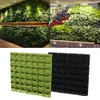

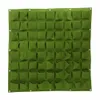
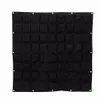
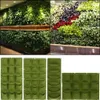
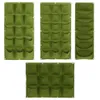
Types of Garden Hanging Bags
When it comes to garden hanging bags, the first thing to consider is the material used. Garden hanging bags can be made from various materials such as fabric, plastic, felt, and others. Each material has its advantages and disadvantages, which determines the suitability of the bag for the plant being grown. For instance, fabrics bags are breathable, allowing proper ventilation for the roots, while plastic bags are non-porous and retain moisture well. Felt bags, on the other hand, are durable and can last for several seasons.
Another essential aspect to consider when choosing a garden hanging bag is the size and shape variation. Garden hanging bags come in different sizes and shapes, ranging from small pouches to large sacks. The size and shape of the garden hanging bag you choose should depend on two factors: the type of plant you want to grow and the space where you intend to hang the bag. Small bags are ideal for growing herbs and small flowering plants, while larger bags are perfect for vegetables such as tomatoes, peppers, and cucumbers.
The variety of shapes available ensures that there is always a suitable option for any garden space. Rectangular-shaped bags are perfect for hanging on walls, while circular bags are best suited for hanging on poles and railings. Cone-shaped bags are ideal for small spaces, as they can be hung on hooks or placed on tables.
How to Use Garden Hanging Bags
When it comes to mounting garden hanging bags, there are a few important tips to keep in mind. For indoor use, it is essential to choose a location that receives an adequate amount of sunlight for the specific plants you plan to grow. Herbs and vegetables typically require at least six hours of direct sunlight per day, while some flowering plants may thrive in slightly shadier conditions. Once you have selected the perfect spot, ensure that the hanging bag is securely fastened to a hook or rod that can support the weight of the soil and plants when fully saturated with water.
For outdoor use, consider the environmental factors such as wind and weather conditions. It’s crucial to secure the hanging bags properly to withstand strong winds and ensure the safety of the plants. Additionally, be mindful of the weight of the hanging bags when filled with soil and water, as they may require additional support to prevent damage to walls, fences, or other structures.
Proper watering and maintenance techniques are also vital for the success of plants grown in garden hanging bags. Since the soil in hanging bags typically dries out faster than traditional garden beds, regular watering is essential. However, overwatering can lead to root rot and other issues, so it’s important to strike a balance. One effective method is to water the plants until the excess water starts draining from the bottom of the hanging bag. This ensures that the roots receive enough moisture without becoming waterlogged.
In addition to watering, regular maintenance includes pruning, fertilizing, and monitoring for pests and diseases. Pruning promotes healthy growth and prevents overcrowding within the hanging bags. Fertilizing should be done according to the specific needs of the plants being grown, and organic fertilizers are often a good choice for container gardening. Keep an eye out for common pests like aphids and spider mites, as well as signs of disease such as mold or yellowing leaves. Prompt action can prevent these issues from spreading and causing significant damage to the plants.
Best Plants for Vertical Planters
Firstly, it is important to choose plants that are suited for vertical planting. Not all plants can thrive in garden hanging bags. Plants with shallow root systems, such as herbs, flowers, and some vegetables, are ideal for vertical planters. Their roots do not need deep soil to grow and they can adapt well to the confined space of a hanging bag.
Herbs are a popular choice for vertical planters. They are easy to grow, low maintenance and add flavor to your meals. Some of the best herbs for vertical planters include basil, parsley, thyme, and mint. These herbs grow well in small spaces, and their fragrant leaves will bring a delightful aroma to your home. They also make great decorative accents, adding a touch of greenery to your living space.
Flowers are another excellent choice for garden hanging bags. They can add vibrant colors and sweet fragrances to any room. Some of the best flowers to grow in vertical planters include petunias, pansies, marigolds, and impatiens. These flowers are low maintenance and bloom beautifully in small spaces. They can also attract pollinators such as bees and butterflies to your home, making your garden more vibrant and lively.
Vegetables can also be grown in vertical planters. This is particularly useful for those who want to grow their own food but don’t have a large outdoor space. Vegetables such as lettuce, kale, spinach, and tomatoes can be grown in garden hanging bags. These plants are easy to care for, produce high yields, and can provide fresh produce all year round. You can even create a mini herb and vegetable garden by combining different plants in one hanging bag.
Benefits of Using Garden Hanging Bags
One of the main advantages of using garden hanging bags is that they are vertical planters, which means they take up less space than traditional gardening methods and allow you to grow more plants in a smaller area. This is especially useful if you live in an apartment or have limited outdoor space. Garden hanging bags are also easy to install and maintain, which makes them an ideal option for those who are new to gardening or have busy schedules.
Another major benefit of using garden hanging bags is that they offer better drainage and aeration for your plants. The material used in these bags allows air to flow through the roots of your plants, reducing the risk of root rot and other common plant diseases. This also helps to promote healthy growth and ensures that your plants receive the necessary nutrients and water.
In addition to the practical benefits, garden hanging bags can also enhance your interior or exterior design. These bags come in a variety of colors, sizes, and materials, allowing you to choose the one that best fits your style and aesthetic preferences. For example, if you prefer a rustic look, you can opt for a burlap hanging bag, while a colorful fabric bag can add a pop of color to your outdoor space.
To further enhance the design of your garden hanging bags, you can experiment with the types of plants you use. For instance, you can plant trailing plants such as ivy or ferns that will cascade down the sides of the bag, creating a beautiful and natural-looking display. Alternatively, you can choose plants with vibrant flowers such as petunias or pansies, which will add a burst of color to your garden.
Overall, garden hanging bags offer numerous benefits for both experienced and novice gardeners alike. Whether you’re looking to save space, improve drainage, or enhance your interior or exterior design, these innovative planters provide a practical and stylish solution. So why not give them a try and enjoy the many benefits they offer?
FAQ
Q1) What size hanging bags are available for vertical planting?
Answer: Garden hanging bags come in various sizes, ranging from small to large. The most common sizes are 7 pockets, 9 pockets, and 12 pockets.
Q2) Can these hanging bags be used indoors as well as outdoors?
Answer: Yes, garden hanging bags can be used both indoors and outdoors. They are versatile and can be hung on any wall or fence, making them a great option for those with limited space or no access to a garden plot.
Q3) How do I maintain my garden hanging bags?
Answer: To maintain your garden hanging bags, you should water the plants regularly and ensure that they receive adequate sunlight. You may also want to fertilize the soil occasionally to help the plants thrive. It’s important to check the bags frequently to ensure that they are not overcrowded or damaged.
Q4) What type of plants are best suited for garden hanging bags?
Answer: Garden hanging bags can accommodate a wide variety of plants, including flowers, herbs, and vegetables. Some popular options include strawberries, tomatoes, peppers, and lettuce. When selecting plants, it’s important to consider their sun and water requirements to ensure they will thrive in the hanging bag environment.



